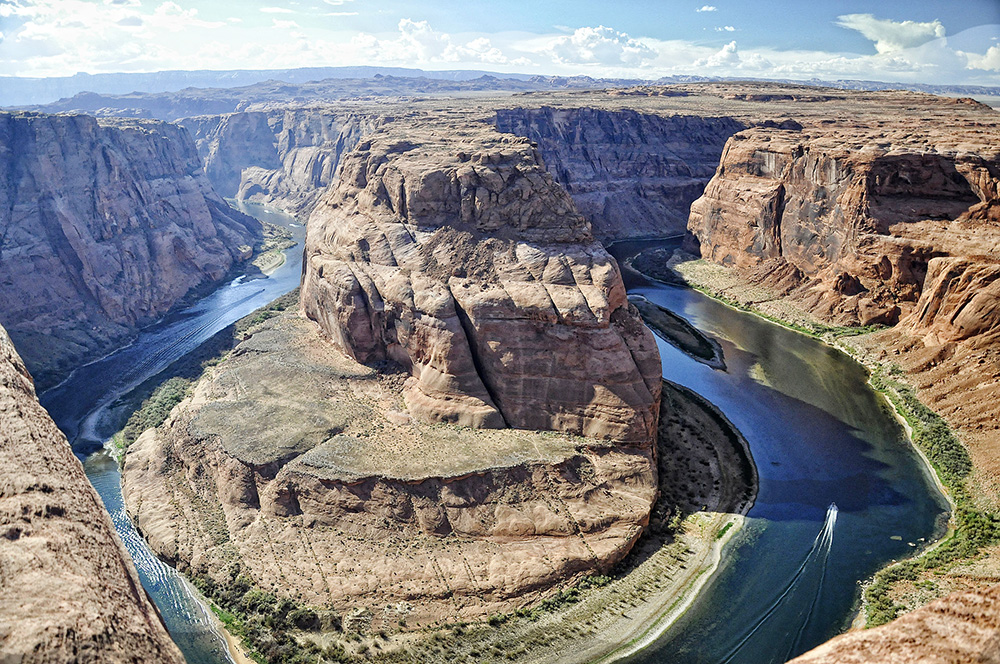Horseshoe Bend, Page, Ariz.
By Brandon Loomis | Arizona Republic
The Colorado River’s worsening water supply outlook has led Arizona, California and Nevada to commit at least $100 million over the next two years to reduce consumption dramatically and keep more water in Lake Mead.
It’s not as though no one saw a crisis coming before now, with a warming climate and decades-long drought continuing to exacerbate the region’s overuse problem. But when the U.S. Bureau of Reclamation formally declared a shortage in August that will necessitate cuts to certain Arizona farmers and others beginning this winter, three states with a long history of bickering over the river teamed up.
The plan fell into place rapidly and calls for the states to collectively hold back 500,000 acre-feet of water in Lake Mead every year for five years — almost matching the amount that Arizona already must forfeit to the shortage declaration. Funding has been identified to compensate water users who agree to cut back in the first two years.
The federal government, Mexico, various tribes and all seven states that use the Colorado will continue to negotiate new guidelines for operating the river’s dams, aiming to complete a plan by 2026, but the states believe they must act now to stop the shrinking reservoir levels from triggering further cuts under the existing rules.
“We need to plan on a more conservative basis,” Arizona Department of Water Resources Director Tom Buschatzke said. “The projections are all heading in a direction where we should assume declining levels of Lake Mead are our future without additional actions.”
When Buschatzke saw the worsening conditions after poor meltwater runoff from the Rocky Mountains last spring, he asked for and got $10 million from the governor’s budget for drought mitigation.
Once Reclamation officials in August projected the reservoir would start next year below elevation 1,075 feet, the trigger for a restrictive shortage declaration, he asked for and got another $30 million. That money came from the pot of federal pandemic recovery funds in the American Rescue Plan Act and will pay for farm efficiency upgrades or temporary field fallowing from willing farmers.












